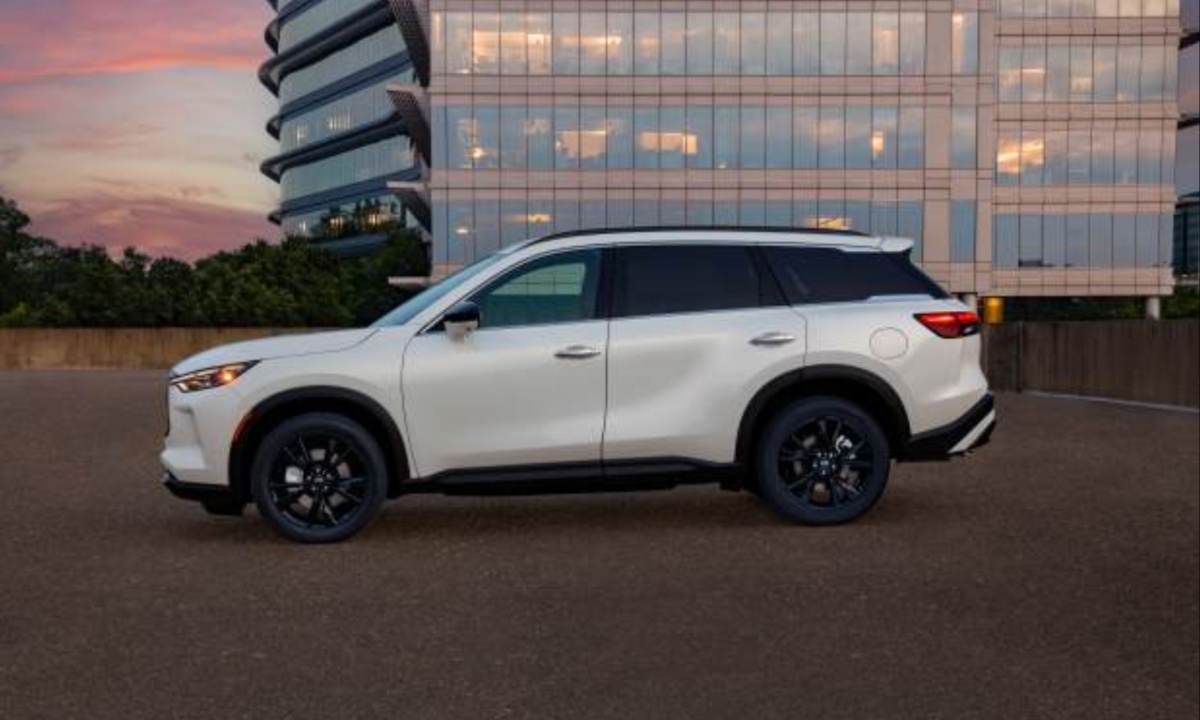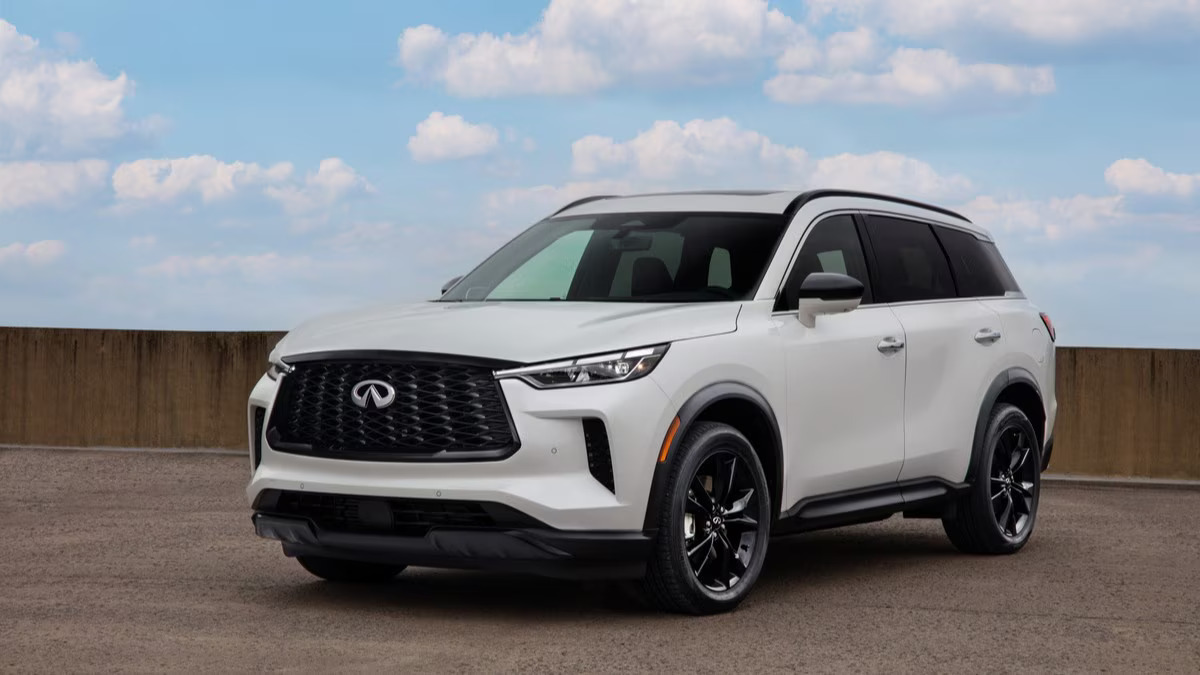The 2022 model year marked the debut of the redesigned Infiniti QX60, a mid-size three-row SUV that showcased a contemporary aesthetic with square shoulders and smooth, rectilinear forms. This new design language is expected to influence the upcoming full-size 2025 QX80.
While the SUV transitioned from a continuously variable automatic transmission to a nine-speed automatic for improved performance, it retained the 3.5-liter V-6 engine that has powered the model since 2018. A recent review of the 2023 QX60 indicated that while the vehicle has seen significant improvements in its core competencies, Infiniti must continue to enhance the QX60’s appeal to solidify its status as a premium brand.
The QX60’s V-6 engine delivers 295 horsepower and 270 pound-feet of torque, which is adequate for everyday driving. However, these figures come with some caveats. The engine achieves peak torque at 4800 rpm and peak horsepower at a high 6400 rpm, producing a somewhat “gritty” engine noise. The review pointed out the need for a more refined powertrain to improve the QX60’s competitive edge in the market, especially since it is Infiniti’s best-selling model in the U.S.
In 2025, Infiniti introduced a new engine option for the QX60—a turbocharged 2.0-liter four-cylinder VC-Turbo engine. While this engine shares technology with the one previously used in the 2019 QX50, it brings both advantages and disadvantages. The four-cylinder produces 268 horsepower and 286 pound-feet of torque, which is slightly less power than the V-6 but offers increased torque at lower rpm, arriving at 4400 rpm. Despite these benefits, the engine’s performance still needs to meet the expectations of buyers looking for a luxurious driving experience.

The new turbocharged engine also offers improved fuel economy, a critical consideration in today’s market. According to EPA ratings, the front-wheel-drive 2025 QX60 achieves 24 mpg overall, surpassing its V-6 predecessor. Although these numbers indicate a step in the right direction, the overall savings at the gas pump may not be substantial, especially considering that both engines recommend premium fuel—albeit the four-cylinder is more demanding in this respect.
While the four-cylinder engine offers fuel efficiency, its performance dynamics suffered due to its calibration. The vehicle’s transmission tends to upshift quickly to maximize fuel economy, often leading to a delay in downshifting, which hampers acceleration. In terms of acceleration, the four-cylinder model took 7.5 seconds to reach 60 mph—1.3 seconds slower than the V-6 variant. Similarly, midrange acceleration was noticeably slower, indicating that the QX60 may not live up to the expectations set by its previous model.
The QX60’s handling dynamics were also less impressive than anticipated. Although the vehicle’s curb weight is slightly reduced, its overall performance did not reflect significant improvements. Lateral acceleration showed a decline, and while the braking performance remained consistent, the overall driving experience felt lackluster compared to its predecessor. The review concluded that despite the new powertrain, the SUV’s dynamics left something to be desired.
The 2025 Infiniti QX60 maintains its attractive styling and satisfactory interior quality, though it has become marginally slower, noisier, and more expensive than its earlier model. The improvements in fuel economy do not necessarily translate to substantial savings for consumers. As Infiniti plans future updates for the QX60, it may benefit from considering a plug-in hybrid option that could enhance both performance and efficiency, ensuring that this popular model continues to meet consumer expectations in the premium SUV segment.

